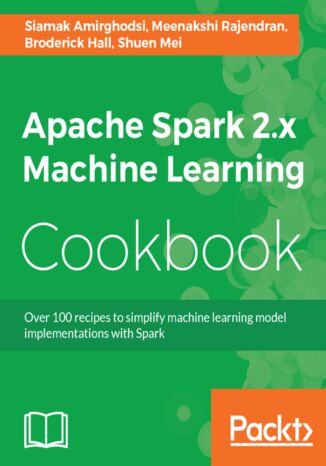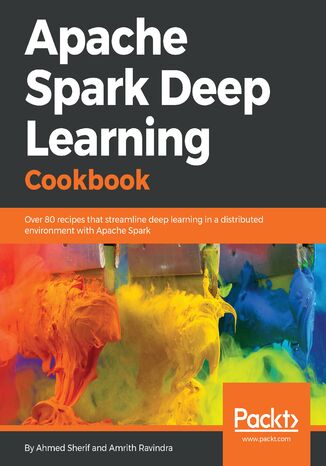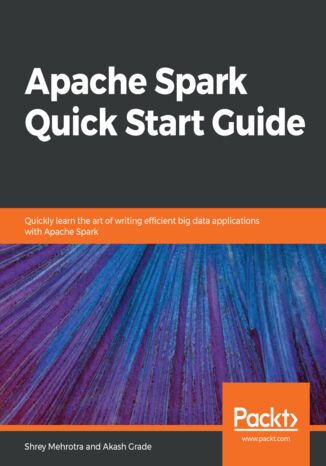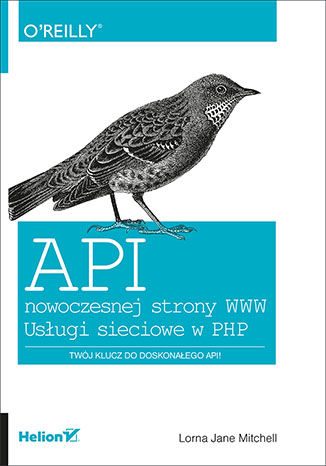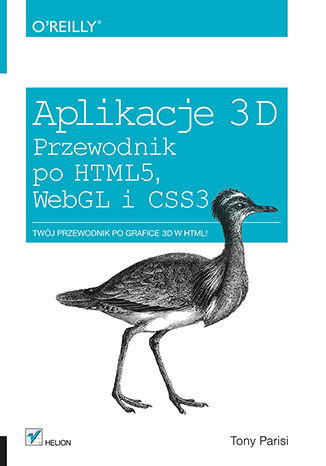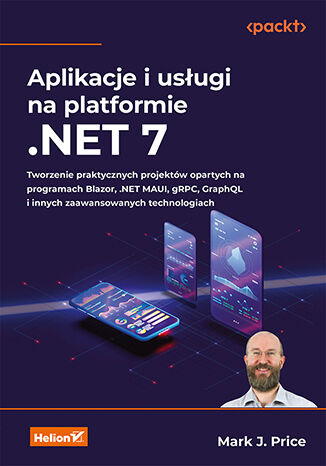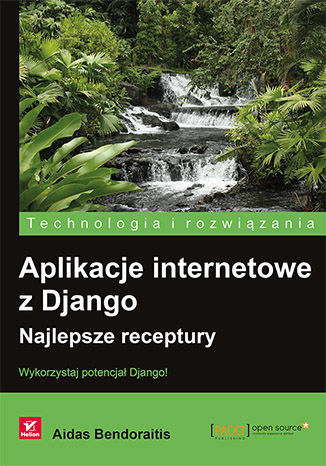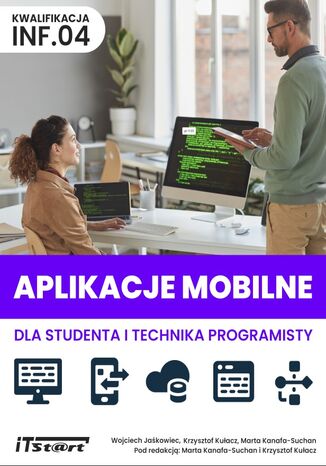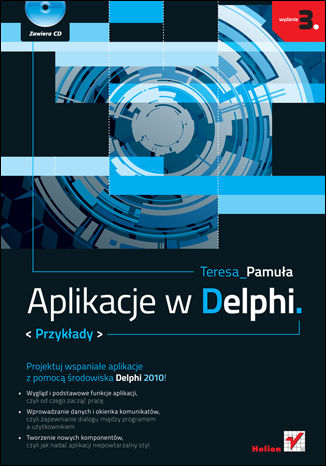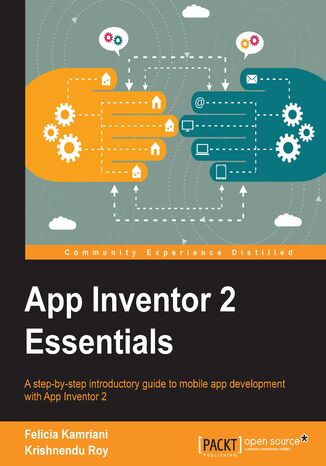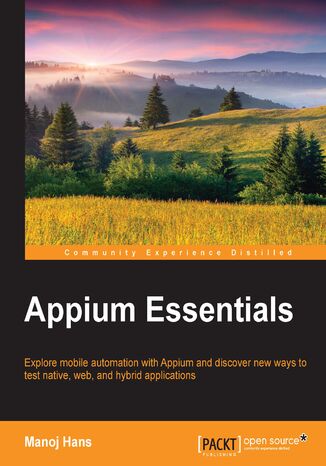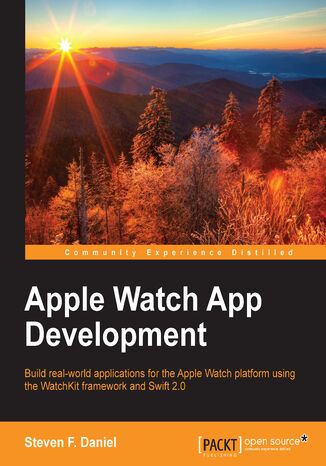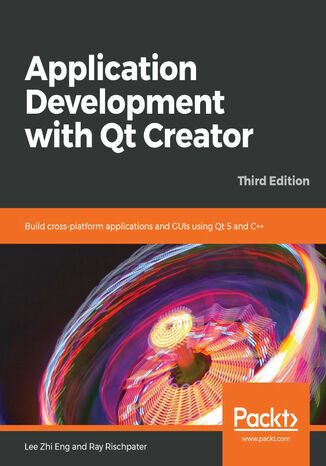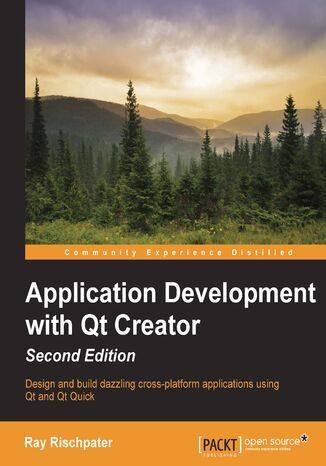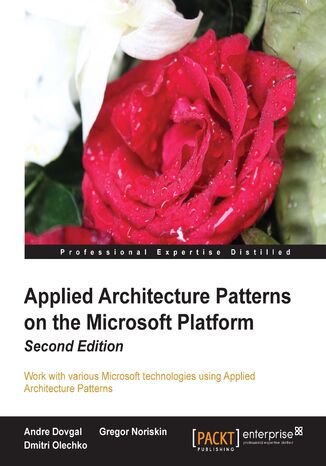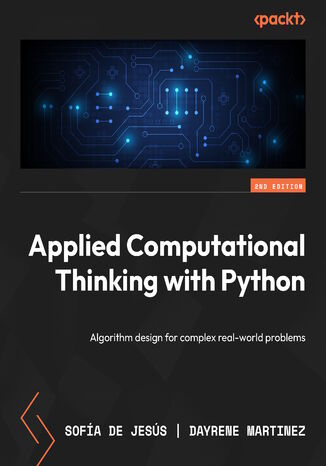Kategorie
-
- Bitcoin
- Bizneswoman
- Coaching
- Controlling
- E-biznes
- Ekonomia
- Finanse
- Giełda i inwestycje
- Kompetencje osobiste
- Komputer w biurze
- Komunikacja i negocjacje
- Mała firma
- Marketing
- Motywacja
- Multimedialne szkolenia
- Nieruchomości
- Perswazja i NLP
- Podatki
- Polityka społeczna
- Poradniki
- Prezentacje
- Przywództwo
- Public Relation
- Raporty, analizy
- Sekret
- Social Media
- Sprzedaż
- Start-up
- Twoja kariera
- Zarządzanie
- Zarządzanie projektami
- Zasoby ludzkie (HR)
-
- Architektura i wnętrza
- BHP
- Biznes i Ekonomia
- Dom i ogród
- E-Biznes
- Ekonomia i finanse
- Ezoteryka
- Finanse
- Finanse osobiste
- Firma
- Fotografia
- Informatyka
- Kadry i płace
- Kobieca
- Komputery, Excel
- Księgowość
- Kultura i literatura
- Naukowe i akademickie
- Ochrona środowiska
- Opiniotwórcze
- Oświata
- Podatki
- Podróże
- Psychologia
- Religia
- Rolnictwo
- Rynek książki i prasy
- Transport i Spedycja
- Zdrowie i uroda
-
- Aplikacje biurowe
- Bazy danych
- Bioinformatyka
- Biznes IT
- CAD/CAM
- Digital Lifestyle
- DTP
- Elektronika
- Fotografia cyfrowa
- Grafika komputerowa
- Gry
- Hacking
- Hardware
- IT w ekonomii
- Pakiety naukowe
- Podręczniki szkolne
- Podstawy komputera
- Programowanie
- Programowanie mobilne
- Serwery internetowe
- Sieci komputerowe
- Start-up
- Systemy operacyjne
- Sztuczna inteligencja
- Technologia dla dzieci
- Webmasterstwo
-
- Antologie
- Ballada
- Biografie i autobiografie
- Dla dorosłych
- Dramat
- Dzienniki, pamiętniki, listy
- Epos, epopeja
- Esej
- Fantastyka i science-fiction
- Felietony
- Fikcja
- Humor, satyra
- Inne
- Klasyczna
- Kryminał
- Literatura faktu
- Literatura piękna
- Mity i legendy
- Nobliści
- Nowele
- Obyczajowa
- Okultyzm i magia
- Opowiadania
- Pamiętniki
- Podróże
- Poemat
- Poezja
- Polityka
- Popularnonaukowa
- Powieść
- Powieść historyczna
- Proza
- Przygodowa
- Publicystyka
- Reportaż
- Romans i literatura obyczajowa
- Sensacja
- Thriller, Horror
- Wywiady i wspomnienia
-
- Archeologia
- Bibliotekoznawstwo
- Filmoznawstwo
- Filologia
- Filologia polska
- Filozofia
- Finanse i bankowość
- Geografia
- Gospodarka
- Handel. Gospodarka światowa
- Historia i archeologia
- Historia sztuki i architektury
- Kulturoznawstwo
- Lingwistyka
- Literaturoznawstwo
- Logistyka
- Matematyka
- Medycyna
- Nauki humanistyczne
- Pedagogika
- Pomoce naukowe
- Popularnonaukowa
- Pozostałe
- Psychologia
- Socjologia
- Teatrologia
- Teologia
- Teorie i nauki ekonomiczne
- Transport i spedycja
- Wychowanie fizyczne
- Zarządzanie i marketing
-
- BHP
- Historia
- Kodeks drogowy. Prawo jazdy
- Nauki prawne
- Ochrona zdrowia
- Ogólne, kompendium wiedzy
- Podręczniki akademickie
- Pozostałe
- Prawo budowlane i lokalowe
- Prawo cywilne
- Prawo finansowe
- Prawo gospodarcze
- Prawo gospodarcze i handlowe
- Prawo karne
- Prawo karne. Przestępstwa karne. Kryminologia
- Prawo międzynarodowe
- Prawo międzynarodowe i zagraniczne
- Prawo ochrony zdrowia
- Prawo oświatowe
- Prawo podatkowe
- Prawo pracy i ubezpieczeń społecznych
- Prawo publiczne, konstytucyjne i administracyjne
- Prawo rodzinne i opiekuńcze
- Prawo rolne
- Prawo socjalne, prawo pracy
- Prawo Unii Europejskiej
- Przemysł
- Rolne i ochrona środowiska
- Słowniki i encyklopedie
- Zamówienia publiczne
- Zarządzanie
-
- Afryka
- Albumy
- Ameryka Południowa
- Ameryka Środkowa i Północna
- Australia, Nowa Zelandia, Oceania
- Austria
- Azja
- Bałkany
- Bliski Wschód
- Bułgaria
- Chiny
- Chorwacja
- Czechy
- Dania
- Egipt
- Estonia
- Europa
- Francja
- Góry
- Grecja
- Hiszpania
- Holandia
- Islandia
- Litwa
- Łotwa
- Mapy, Plany miast, Atlasy
- Miniprzewodniki
- Niemcy
- Norwegia
- Podróże aktywne
- Polska
- Portugalia
- Pozostałe
- Przewodniki po hotelach i restauracjach
- Rosja
- Rumunia
- Słowacja
- Słowenia
- Szwajcaria
- Szwecja
- Świat
- Turcja
- Ukraina
- Węgry
- Wielka Brytania
- Włochy
-
- Filozofie życiowe
- Kompetencje psychospołeczne
- Komunikacja międzyludzka
- Mindfulness
- Ogólne
- Perswazja i NLP
- Psychologia akademicka
- Psychologia duszy i umysłu
- Psychologia pracy
- Relacje i związki
- Rodzicielstwo i psychologia dziecka
- Rozwiązywanie problemów
- Rozwój intelektualny
- Sekret
- Seksualność
- Uwodzenie
- Wygląd i wizerunek
- Życiowe filozofie
-
- Bitcoin
- Bizneswoman
- Coaching
- Controlling
- E-biznes
- Ekonomia
- Finanse
- Giełda i inwestycje
- Kompetencje osobiste
- Komunikacja i negocjacje
- Mała firma
- Marketing
- Motywacja
- Nieruchomości
- Perswazja i NLP
- Podatki
- Polityka społeczna
- Poradniki
- Prezentacje
- Przywództwo
- Public Relation
- Sekret
- Social Media
- Sprzedaż
- Start-up
- Twoja kariera
- Zarządzanie
- Zarządzanie projektami
- Zasoby ludzkie (HR)
-
- Antologie
- Ballada
- Biografie i autobiografie
- Dla dorosłych
- Dramat
- Dzienniki, pamiętniki, listy
- Epos, epopeja
- Esej
- Fantastyka i science-fiction
- Felietony
- Fikcja
- Humor, satyra
- Inne
- Klasyczna
- Kryminał
- Literatura faktu
- Literatura piękna
- Mity i legendy
- Nobliści
- Nowele
- Obyczajowa
- Okultyzm i magia
- Opowiadania
- Pamiętniki
- Podróże
- Poezja
- Polityka
- Popularnonaukowa
- Powieść
- Powieść historyczna
- Proza
- Przygodowa
- Publicystyka
- Reportaż
- Romans i literatura obyczajowa
- Sensacja
- Thriller, Horror
- Wywiady i wspomnienia
-
- Filozofie życiowe
- Komunikacja międzyludzka
- Mindfulness
- Ogólne
- Perswazja i NLP
- Psychologia akademicka
- Psychologia duszy i umysłu
- Psychologia pracy
- Relacje i związki
- Rodzicielstwo i psychologia dziecka
- Rozwiązywanie problemów
- Rozwój intelektualny
- Sekret
- Seksualność
- Uwodzenie
- Wygląd i wizerunek
- Życiowe filozofie
- Ebooki
- Informatyka
- Programowanie
Programowanie
Nasza biblioteka online zawiera szereg publikacji, dzięki którym programowanie nie będzie mieć przed Tobą żadnych tajemnic. Zawarte tu książki przybliżą Ci takie języki jak HTML, JavaScript, Python czy CSS. Dowiesz się dzięki nim także tego, jak tworzyć efektywne algorytmy, projektować aplikacje mobilne, czy dbać o poprawną architekturę informacji w serwisach internetowych.
Siamak Amirghodsi, Shuen Mei, Meenakshi Rajendran, Broderick Hall
Machine learning aims to extract knowledge from data, relying on fundamental concepts in computer science, statistics, probability, and optimization. Learning about algorithms enables a wide range of applications, from everyday tasks such as product recommendations and spam filtering to cutting edge applications such as self-driving cars and personalized medicine. You will gain hands-on experience of applying these principles using Apache Spark, a resilient cluster computing system well suited for large-scale machine learning tasks.This book begins with a quick overview of setting up the necessary IDEs to facilitate the execution of code examples that will be covered in various chapters. It also highlights some key issues developers face while working with machine learning algorithms on the Spark platform. We progress by uncovering the various Spark APIs and the implementation of ML algorithms with developing classification systems, recommendation engines, text analytics, clustering, and learning systems. Toward the final chapters, we’ll focus on building high-end applications and explain various unsupervised methodologies and challenges to tackle when implementing with big data ML systems.
Organizations these days need to integrate popular big data tools such as Apache Spark with highly efficient deep learning libraries if they’re looking to gain faster and more powerful insights from their data. With this book, you’ll discover over 80 recipes to help you train fast, enterprise-grade, deep learning models on Apache Spark.Each recipe addresses a specific problem, and offers a proven, best-practice solution to difficulties encountered while implementing various deep learning algorithms in a distributed environment. The book follows a systematic approach, featuring a balance of theory and tips with best practice solutions to assist you with training different types of neural networks such as convolutional neural networks (CNNs) and recurrent neural networks (RNNs). You’ll also have access to code written in TensorFlow and Keras that you can run on Spark to solve a variety of deep learning problems in computer vision and natural language processing (NLP), or tweak to tackle other problems encountered in deep learning.By the end of this book, you'll have the skills you need to train and deploy state-of-the-art deep learning models on Apache Spark.
Apache Spark is a ?exible framework that allows processing of batch and real-time data. Its unified engine has made it quite popular for big data use cases. This book will help you to get started with Apache Spark 2.0 and write big data applications for a variety of use cases.It will also introduce you to Apache Spark – one of the most popular Big Data processing frameworks. Although this book is intended to help you get started with Apache Spark, but it also focuses on explaining the core concepts. This practical guide provides a quick start to the Spark 2.0 architecture and its components. It teaches you how to set up Spark on your local machine. As we move ahead, you will be introduced to resilient distributed datasets (RDDs) and DataFrame APIs, and their corresponding transformations and actions. Then, we move on to the life cycle of a Spark application and learn about the techniques used to debug slow-running applications. You will also go through Spark’s built-in modules for SQL, streaming, machine learning, and graph analysis.Finally, the book will lay out the best practices and optimization techniques that are key for writing efficient Spark applications. By the end of this book, you will have a sound fundamental understanding of the Apache Spark framework and you will be able to write and optimize Spark applications.
API nowoczesnej strony WWW. Usługi sieciowe w PHP
Twój klucz do doskonałego API! Za sukcesem i siłą najpopularniejszych serwisów w sieci często stoi decyzja o szerokim udostępnieniu API (ang. Application Programming Interface). Dzięki temu programiści z całego świata mogą tworzyć rozwiązania oparte na istniejących usługach, integrować różne systemy oraz tworzyć rozszerzenia. Sięgnij po tę książkę, naucz się korzystać z udostępnionego API i zbuduj własne. Poznaj tajniki budowania przyjaznego interfejsu API. Ta książka pomoże Ci zorientować się, jak działa protokół HTTP, jakie metody udostępnia oraz jakie informacje możesz znaleźć w nagłówkach. Po opanowaniu podstaw przejdziesz do najpopularniejszych formatów wymiany informacji pomiędzy systemami — JSON oraz XML. Zaznajomisz się też z usługami SOAP, RPC i REST. Na sam koniec dowiesz się, jak projektować niezawodne usługi oraz obsługiwać błędy. Jeżeli chcesz, żeby Twoje API zainteresowało innych programistów, musisz zadbać o jego dobrą dokumentację. Zdobądź niezbędną wiedzę o PHP! Poznasz protokół HTTP, czasowniki cyklu żądań i odpowiedzi oraz nagłówki i ciasteczka. Dowiesz się, kiedy lepiej jest użyć formatu JSON, a kiedy XML. Nauczysz się tworzyć usługi typu RPC, SOAP i RESTful. Poznasz wiele narzędzi i technik diagnozowania usług sieciowych HTTP. Nauczysz się wybierać najlepszy rodzaj usługi dla swoich aplikacji i dowiesz się, jak tworzyć niezawodne usługi sieciowe. Nauczysz się dokumentować swoje interfejsy API — oraz projektować w nich mechanizmy obsługi błędów. Zbuduj API zgodne z oczekiwaniami innych programistów!
Aplikacje 3D. Przewodnik po HTML5, WebGL i CSS3
Twój przewodnik po grafice 3D w HTML! Do niedawna wywietlanie zaawansowanej grafiki 3D w przeglądarce internetowej wymagało zainstalowania dodatkowych wtyczek oraz poznawania nowych narzędzi. Dzięki HTML5 i WebGL te czasy powoli odchodzą w niepamięć! Teraz możesz wykorzystać niesamowite możliwoci tego duetu, by zaskoczyć użytkowników atrakcyjnymi efektami 3D! Ta wyjątkowa książka została w całoci powięcona włanie zagadnieniom związanym z grafiką 3D w przeglądarce internetowej. Sięgnij po nią i przekonaj się, jak wykorzystać API WebGL do renderowania trójwymiarowej grafiki w czasie rzeczywistym. W kolejnych rozdziałach poznasz bibliotekę języka JavaScript Three.js, która w znaczący sposób ułatwia życie programisty. Informacje zawarte w dalszych rozdziałach pozwolą Ci skorzystać z zaawansowanych efektów w CSS3 i tworzyć animacje trójwymiarowe. Zaznajomisz się też z detalami tworzenia aplikacji dla urządzeń mobilnych. Twoją uwagę z pewnocią przykuje przegląd narzędzi do tworzenia trójwymiarowych modeli i animacji zarówno tych klasycznych, jak i tych online. Książka ta jest doskonałą lekturą dla wszystkich deweloperów chcących wzbogacić swój warsztat o elementy grafiki 3D. Dzięki tej książce: zapoznasz się z podstawami teorii dla grafiki 3D poznasz API WebGL wykorzystasz bibliotekę Three.js w codziennej pracy odkryjesz narzędzia przydatne w codziennej pracy jeszcze bardziej uatrakcyjnisz Twoją stronę Poznaj potencjał HTML5 w zakresie grafiki 3D! "Tony Parisi od samego początku wiedzie prym w dziedzinie rewolucyjnych rozwiązań pozwalających zagościć interaktywnym aplikacjom trójwymiarowym w internecie. Jego nowa książka zawiera dogłębne informacje na temat tych technologii oraz tworzenia najnowocześniejszych trójwymiarowych aplikacji naprawdę działających w aktualnie dostępnych przeglądarkach". - Neil Trevett, wiceprezes ds. treści mobilnej w firmie NVIDIA i prezes organizacji Khronos Group
C# i wieloplatformowy framework .NET sprawiają, że praca programisty jest efektywna i satysfakcjonująca. Podobnie jak w wypadku innych zaawansowanych technologii, nauka obsługi .NET może sprawić sporo trudności. Wielu deweloperów odkrywa, że oficjalna dokumentacja nie wystarczy do nabrania wprawy w tworzeniu złożonych projektów. To książka przeznaczona dla programistów zaznajomionych z podstawami języka C# i platformy .NET, chcących zdobyć umiejętność tworzenia rzeczywistych aplikacji i usług. Opisuje wyspecjalizowane biblioteki, które umożliwiają monitorowanie i zwiększanie wydajności aplikacji, zabezpieczanie ich wraz z danymi, a także internacjonalizowanie ich kodu. Zawiera również omówienie najnowszych rozwiązań, bibliotek i technologii w połączeniu z ich praktycznym zastosowaniem ― między innymi Web API, OData, gRPC, GraphQL, SignalR i Azure Functions. Nie zabrakło prezentacji technik pracy z .NET MAUI, programu, który służy do tworzenia aplikacji mobilnych dla systemów iOS i Android, a także stacjonarnych dla systemów Windows i macOS. Najciekawsze zagadnienia: wydajność, bezpieczeństwo i skalowalność aplikacji i usług specjalistyczne biblioteki .NET i biblioteki zewnętrzne, takie jak Serilog i FluentValidation tworzenie wielosystemowych aplikacji i ich integracja z natywnymi funkcjami mobilnych systemów operacyjnych stosowanie różnych technologii, między innymi bibliotek komponentów Blazor praca z danymi w bazach SQL Server i Cosmos DB Aplikacje w .NET, wydajne, skalowalne, bezpieczne - poznaj najnowsze rozwiązania!
Aplikacje internetowe z Django. Najlepsze receptury
Ponad 70 praktycznych gotowych rozwiązań do tworzenia wielojęzykowych, responsywnych i skalowalnych witryn internetowych przy użyciu systemu Django Django to szkielet napisany w języku Python, pozwalający na błyskawiczne tworzenie zaawansowanych aplikacji internetowych. Dostarcza on wielu narzędzi, które przyśpieszają i znacząco ułatwiają pracę programisty. Wśród nich znajdziesz system szablonów, system mapowania obiektowo-relacyjnego oraz automatyczny interfejs do zarządzania treścią. Ale to nie wszystko! Przekonaj się, co jeszcze potrafi Django. Ta książka jest doskonałym źródłem informacji na temat tego systemu. Wiedza, którą za chwilę zdobędziesz, przedstawiona jest w formie receptur. Kolejne rozdziały to świetne przepisy na: zarządzanie zależnościami, tworzenie struktury bazy danych, projektowanie formularzy i przetwarzanie pozyskanych z nich danych oraz korzystanie z systemów szablonów. Dowiesz się stąd, jak tworzyć własne filtry i znaczniki w szablonach, modelować panel administracyjny oraz korzystać z Django CMS. Poznasz także system mapowania obiektowo-relacyjnego oraz wdrożysz aplikację na serwerze. Dzięki tym znakomitym przepisom możesz błyskawicznie nauczyć się pracować z Django oraz uruchomić swoją pierwszą aplikację napisaną z jego wykorzystaniem! Z książki tej nauczysz się: Prawidłowo konfigurować projekty Django Budować strukturę bazy danych z domieszek modelowych wielokrotnego użytku Zarządzać strukturami hierarchicznymi przy użyciu algorytmu MPTT Wykorzystywać skrypty JavaScript w responsywnych szablonach Tworzyć filtry i znaczniki szablonowe nadające się do wykorzystania w każdym projekcie Konfigurować panel administracyjny Rozszerzać system Django CMS o własne składniki Poznaj moc języka Python w tworzeniu aplikacji internetowych!
Aplikacje mobilne dla studenta i technika programisty
Wojciech Jaśkowiec, Krzysztof Kułacz, Marta Kanafa-Suchan
Książka Aplikacje Mobilne dla studenta i technika programisty to jest przeznaczona dla każdego kto chce zapoznać się z tematem tworzenia aplikacji mobilnych dla systemu Android. W pierwszej części książki czytelnik zapoznaje się z tajnikami Języka Java. Dogłębnie zapoznaje się z tematyką: programowania obiektowego, oraz współbieżnego. Poruszane są w niej zagadnienia m.in.: klas, obiektów jak i wątków. W drugiej części zapoznajemy się z tworzeniem aplikacji mobilnych w środowisku Android Studio. Strona wizualna aplikacji tworzona jest z wykorzystaniem języka znaczników xml. Zaś język Java odpowiada za sterowanie działaniem aplikacji. Książka stanowi szczegółowy poradnik dla każdego kto jest zainteresowany tworzeniem Aplikacji Mobilnych.
Aplikacje w Delphi. Przykłady. Wydanie III
Projektuj wspaniałe aplikacje z pomocą środowiska Delphi 2010! Wygląd i podstawowe funkcje aplikacji, czyli od czego zacząć pracę Wprowadzanie danych i okienka komunikatów, czyli zapewnianie dialogu między programem a użytkownikiem Tworzenie nowych komponentów, czyli jak nadać aplikacji niepowtarzalny styl Środowisko Delphi służy do szybkiego tworzenia aplikacji działających w systemie Windows. Zawiera bogate biblioteki komponentów, mechanizmy Plug and Play oraz Code Insight, a także palety komponentów i narzędzia ułatwiające ich wyszukiwanie. Dzięki Delphi IDE można w prosty sposób zaprojektować interfejs użytkownika nowej aplikacji, określić jej wygląd oraz sposób działania w oparciu o istniejące kontrolki i biblioteki klas, w dużym stopniu zdając się na automatyczne generowanie kodu. Jeśli chcesz poznać, dogłębnie zrozumieć i wykorzystać do swoich celów sposób działania Delphi 2010, powinieneś koniecznie sięgnąć po książkę "Aplikacje w Delphi. Przykłady". Znajdziesz tu wszelkie informacje na temat obsługi samego środowiska, podstawowych składników każdej tworzonej aplikacji, wprowadzania i formatowania danych, list, tabel, grupowania i projektowania nowych komponentów, wykorzystania technologii OLE do zapisu i modyfikacji danych w formatach .doc i .xls, możliwości graficznej prezentacji danych, ich drukowania i współpracy Twojej aplikacji z multimediami. Wszystko to oraz wiele innych zagadnień pokazano tu na praktycznych, konkretnych przykładach, ułatwiających zrozumienie i gotowych do zastosowania w Twoich własnych projektach. Podstawowe składniki aplikacji, menu główne i podręczne, pasek narzędzi Wprowadzanie danych, formatowanie i wyświetlanie na ekranie Okienka komunikatów i okienka dialogowe z karty Dialogs Listy wyboru i prosty edytor Grupowanie i dynamiczne tworzenie komponentów Komponenty do wyboru daty i czasu, odmierzanie czasu Zakładki TTabControl i TPageControl Grafika w Delphi i wyświetlanie obrazów Tabelaryzacja danych i ich graficzna prezentacja danych Współpraca programu z plikami dyskowymi Drukowanie w Delphi i programy z wieloma oknami Posługiwanie się wieloma komponentami tego samego typu Definiowanie nowych klas komponentów i wykorzystanie mechanizmu OLE Podstawowe operacje na bazach danych Delphi i multimedia Odkryj fantastyczne możliwości Delphi!
Felicia Kamriani, Krishnendu Roy
App Inventor 2 will take you on a journey of mobile app development. We begin by introducing you to the functionalities of App Inventor and giving you an idea about the types of apps you can develop using it. We walk you through the technical set up so you can take advantage of the interactive development environment (live testing). You will get hands-on, practical experience building three different apps using tutorials. Along the way, you will learn computer science principles as well as tips to help you prepare for the creative process of building an app from scratch. By the end of the journey, you will learn how to package an app and deploy it to app markets. App Inventor 2 Essentials prepares you to amass a resource of skills, knowledge and experience to become a mobile app developer
Apple Watch App Development. Click here to enter text
With the increasing amount of new wearable devices hitting the market, wearables are the next wave of mobile technology. With the release of Apple's WatchKit SDK, a whole new world of exciting development possibilities hasopened up.Apple Watch App Development introduces you to the architecture and limitations of the Apple Watch platform, followed by an in-depth look at how to work with Xcode playgrounds. Here, we'll introduce you to the Swift programming language so you can quickly begin developing apps for the Apple Watch platform with the WatchKit framework and the Xcode Development IDE. We then discuss more advanced topics such as Notifiations, Glances, Closures, Tuples, Protocols, Apple pay, and using Swift playgrounds, with each concept backed up with example code that demonstrates how to properly execute it. We also show you how to package and deploy your Watch application to the Apple AppStore.By the end of this book, you will have a good understanding of how to develop apps for Apple Watch platform using the WatchKit framework and Swift 2.0.
Qt is a powerful development framework that serves as a complete toolset for building cross-platform applications, helping you reduce development time and improve productivity. Completely revised and updated to cover C++17 and the latest developments in Qt 5.12, this comprehensive guide is the third edition of Application Development with Qt Creator.You'll start by designing a user interface using Qt Designer and learn how to instantiate custom messages, forms, and dialogues. You'll then understand Qt's support for multithreading, a key tool for making applications responsive, and the use of Qt's Model-View-Controller (MVC) to display data and content. As you advance, you'll learn to draw images on screen using Graphics View Framework and create custom widgets that interoperate with Qt Widgets. This Qt programming book takes you through Qt Creator's latest features, such as Qt Quick Controls 2, enhanced CMake support, a new graphical editor for SCXML, and a model editor. You'll even work with multimedia and sensors using Qt Quick, and finally develop applications for mobile, IoT, and embedded devices using Qt Creator.By the end of this Qt book, you'll be able to create your own cross-platform applications from scratch using Qt Creator and the C++ programming language.
Sofía De Jesús, Dayrene Martinez
Computational thinking helps you to develop logical processing and algorithmic thinking while solving real-world problems across a wide range of domains. It's an essential skill that you should possess to keep ahead of the curve in this modern era of information technology. Developers can apply their knowledge of computational thinking to solve problems in multiple areas, including economics, mathematics, and artificial intelligence.This book begins by helping you get to grips with decomposition, pattern recognition, pattern generalization and abstraction, and algorithm design, along with teaching you how to apply these elements practically while designing solutions for challenging problems. You’ll then learn about various techniques involved in problem analysis, logical reasoning, algorithm design, clusters and classification, data analysis, and modeling, and understand how computational thinking elements can be used together with these aspects to design solutions. Toward the end, you will discover how to identify pitfalls in the solution design process and how to choose the right functionalities to create the best possible algorithmic solutions.By the end of this algorithm book, you will have gained the confidence to successfully apply computational thinking techniques to software development.

